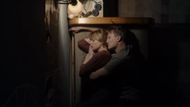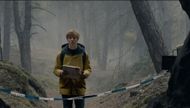The German series 'Dark' became a popular sci-fi thriller after its premiere in 2017, even seeping onto Netflix. The show is set in Winden, a quiet town that faces nail-biting, mysterious cases, the first one being children going missing. However, the series took a surprising turn by episode five of season one, which was aptly titled “Truths.”
The trailer gave a glimpse of what was to come, but no amount of preparation would have prepared the audience for the emotional avalanche. The episode became intensely viral almost eight years post-release.
It is safe to say that the season is, as Dark’s co-creator Jantje Friese put it, “a bridge before the climax,” aka the ground-zero defines climax season. The show blended family drama, time travel, and an apocalypse, but “Truths” focuses on trauma and fate, which almost defines the beat of the dystopian earth filled with emotions and strife.
The captivating sequence showcases the spiraling of various characters across different timelines and the impact of a singular speculative decision claimed by Hannah regarding Ulrich. The song’s melancholic vocals, coupled with a piano, give the audience an emotional beating.
The lyrical phrase, “Me and the Devil, walking side by side,” seems like it was crafted specifically for Dark. This captures the essence of the show perfectly – everyone in Winden is trapped in an endless loop of repeating their history. Jealousy and Hannah’s deception lead to a chain reaction of events that is impossible to reverse.
Ulrich's arrest and Katharina's discovered betrayal lead Jonas to painfully uncover that his father is, in fact, Mikkel, a time-traveling boy who vanished. Everything happens simultaneously in a single sequence. After this intersection, the show doesn't bother to answer whether time can be changed. Instead, it reveals how futile it is to attempt.
How music became the Dark’s most devastating weapon

Soap&Skin's "Me and the Devil" is not just background music; it serves as a storytelling device. Anja Plaschg’s voice lingers on each shot like a specter from Winden's past, the piano chords creating an echoing ticking clock. It does not simply follow events—it elevates them towards a mythical standard. Hannah's betrayal is rendered as biblical, Ulrich’s arrest feels as if it were destined, and Jonas’s revelation comes across as a prophecy previously acknowledged.
These types of tracks or music cues are not novel, but very few have had such an enduring impact. Dark is in the same bracket as Stranger Things, Euphoria, and even The OC for their capacity to use a particular song to capture a universal sentiment. Unlike the rest, the impact here is not nostalgic or trendy, but unnervingly cold. It marks the audience with a feeling that lingers much like Winden itself: a town that feels impossible to wake from.
A scene that’s still haunting the viewers — and attracting new ones

The same montage is receiving attention once more in 2025, particularly on TikTok, where users seek to recreate or recall its glory using the audio clip. This is not merely fueled by nostalgia. Today, many new viewers are stumbling upon Dark—and often out of context—through the scene and getting hooked immediately.
Tons of new viewers are bingeing it for the first time now, while old fans are gearing up for the first planned rewatch. The moment is no longer a fragment of the past—it’s a multi-generational viral phenomenon, showcasing what happens when the music, editing, and storytelling ingredients are nearly perfectly intertwined.
In a sense, “Me and the Devil” Soap&Skin's cover on tracks, like Ice Nine Kills’ “Unholy,” Dark became a masterpiece long before it defined it. A tune that now evokes the tragedy and brilliance of Dark, just like Breaking Bad’s “Baby Blue” became inseparable from Walter White's last moments, is now forever.
A show obsessed with the notion of time repeating itself probably couldn’t wish for anything more than its most defining moment is getting a second life—(red)reset, circling back to where it all started, just like time in Winden.
